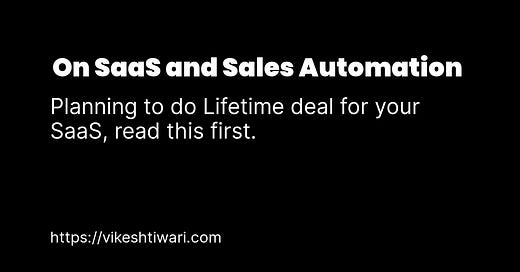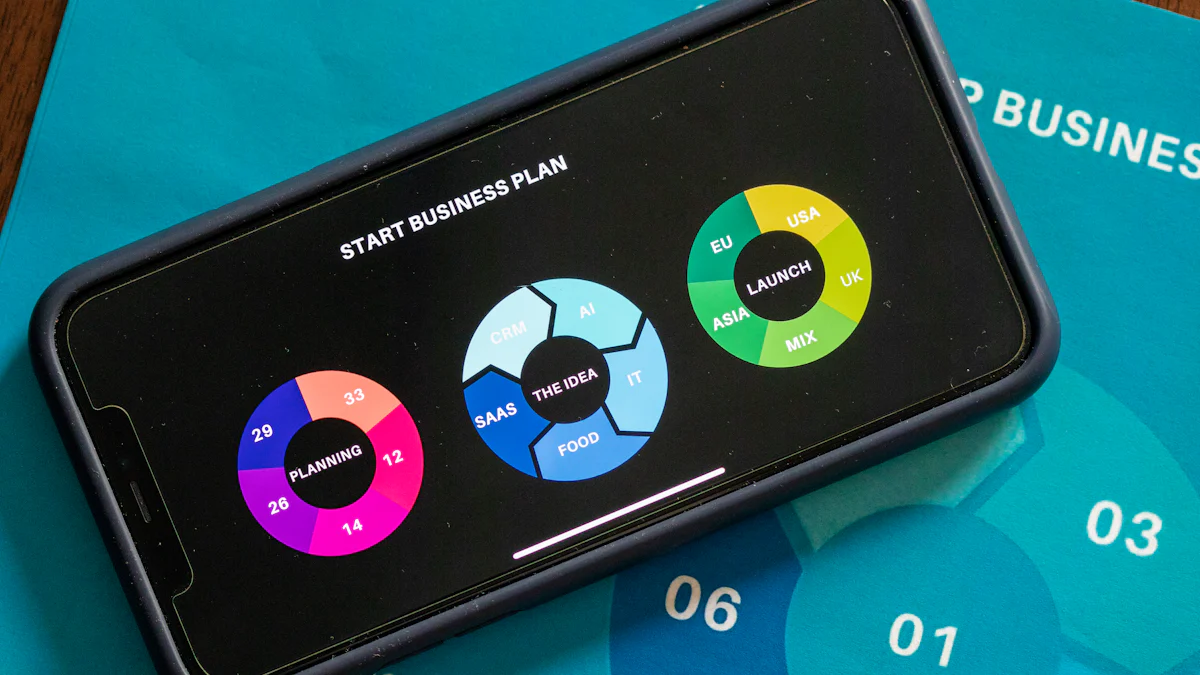Imagine a scenario where you can access top-notch software without worrying about monthly or annual fees. Sounds appealing, right?
SaaS lifetime deals offer this very promise, providing you with tools that can enhance your productivity and streamline your operations for a one-time payment. But before you jump in, it’s crucial to weigh the benefits against the potential drawbacks. What if the software doesn’t evolve with your needs?
Or worse, what if the company folds? You’ll discover the true pros and cons of SaaS lifetime deals, helping you make informed decisions that maximize your investment. So, are you ready to uncover the secrets behind these tempting offers? Dive in and learn how you can leverage them to your advantage.
Table of Contents
ToggleUnderstanding Saas Lifetime Deals
Understanding SaaS lifetime deals can be a game-changer for businesses looking to save money and streamline operations. You might have come across these deals while browsing through software options and wondered if they’re worth it. Let’s break down the basics, so you can make an informed decision.
What Are Saas Lifetime Deals?
SaaS lifetime deals offer a one-time payment for access to a software service indefinitely. Imagine buying a subscription once and forgetting about monthly or yearly renewals. This model is increasingly popular among startups and smaller software companies trying to expand their user base quickly. Think about the peace of mind from not worrying about subscription fees skyrocketing over time.
Why Do Companies Offer Lifetime Deals?
Offering lifetime deals is a strategy for companies to gain traction and visibility. It provides them with upfront capital to improve and scale their products. You might have seen companies launch these deals during their early stages. It’s a win-win situation: they get funds to grow, and you get a service at a fraction of the regular cost.
Advantages of Saas Lifetime Deals
One of the biggest advantages is cost savings. Paying once can save you hundreds or even thousands in the long run. Imagine the joy of cutting down your software expenses significantly. Lifetime deals often come with premium features, giving you access to the full power of the software without additional charges. It’s like having a VIP pass in the digital world.
Not all that glitters is gold. One downside could be the risk of the company shutting down. You pay upfront, but what if the service ceases to exist in a few years? Another concern is the lack of updates or reduced support over time. These are critical factors to consider before jumping in. Are you willing to risk it for the potential savings?
How to Evaluate a Saas Lifetime Deal
Start by researching the company. Check their reputation, reviews, and future growth potential. Look for signs of stability. Consider the software’s features and how they align with your needs. Compare lifetime cost with regular subscription fees. Are you getting enough value for your money? Ask yourself these questions to make a smart choice.
Understanding SaaS lifetime deals can empower you to make better purchasing decisions. Weigh the pros and cons carefully. Could a lifetime deal be the key to your software budget woes?

Credit: www.vikeshtiwari.com
Benefits of Saas Lifetime Deals
Software as a Service (SaaS) lifetime deals have become increasingly popular among businesses and individuals looking for cost-effective solutions. These deals offer users the chance to pay a one-time fee for access to software tools, often saving them money in the long run. But what are the real benefits of opting for a lifetime deal? Let’s break down some compelling advantages.
Cost Savings
Imagine never having to worry about monthly or annual subscription fees again. With SaaS lifetime deals, you pay once and enjoy the service indefinitely. This can mean significant savings, especially if you plan to use the software for a long time.
If you’re like me, and often find yourself tallying up recurring bills, you’ll appreciate the relief from monthly expenses. Why not put that money towards other investments or even a little treat for yourself?
Access to Premium Features
Lifetime deals often come with access to premium features that would otherwise require expensive upgrades. You get the full suite of tools right from the start. This ensures that you can maximize the potential of the software without worrying about budget constraints.
Having full access means you can experiment with advanced features that you might have previously overlooked due to cost. Think about how these features can improve your workflow or enhance your projects.
Long-term Value
Investing in a SaaS lifetime deal means you are betting on the long-term value of the software. If the tool continues to improve and evolve, you benefit without paying extra. This is a huge advantage if the software becomes a key part of your operations.
However, it’s worth considering: will the software meet your needs in the future? Sometimes, it’s a gamble that pays off tremendously, providing value beyond your initial expectations.
So, are SaaS lifetime deals the right choice for you? Weigh the potential savings, premium access, and long-term benefits carefully. What would you do with those savings or enhanced features in your toolkit?
Potential Drawbacks
While SaaS lifetime deals can seem like a dream come true, offering you software access without monthly fees, they come with their own set of potential drawbacks. It’s crucial to weigh these cons carefully before diving headfirst into a lifetime commitment. After all, who wants to be stuck with a software that doesn’t meet your evolving needs?
Risk of Obsolescence
Technology evolves rapidly. The software you purchase today might be outdated tomorrow. Imagine investing in a lifetime deal only to find out the tool no longer supports newer integrations or technologies. Have you ever bought a gadget that quickly became obsolete? It’s a similar risk with lifetime software deals. Consider the future adaptability of the software you’re eyeing.
Limited Support
With a lifetime deal, you might not get the same level of support as regular subscribers. Companies often prioritize paying customers for updates and troubleshooting. This could leave you in a bind when you face technical issues. How would you feel if you faced a problem and had no one to help you? Evaluate the support offered before committing.
Scalability Concerns
Your business might grow, but will the software keep up? Lifetime deals can lock you into a version that’s great now but falls short as your needs expand. Think about your business trajectory and whether the software can scale with you. What happens if your team doubles in size? Make sure the deal includes options for scalability.

Credit: quickcreator.io
Factors to Consider
When considering SaaS lifetime deals, several factors are crucial. These deals offer a one-time payment for software access. Knowing the pros and cons helps in making informed decisions. Here are key factors to consider.
Business Needs Alignment
First, assess if the software meets your business needs. Not all tools suit every business. Ensure the features align with your goals. Check if the software fits your workflow. Consider its compatibility with existing systems. Evaluate the potential for future growth. A tool should evolve with your business.
Vendor Reputation
Vendor reputation is another crucial factor. Research the provider’s background. Read reviews and testimonials. Check their history in the industry. A reliable vendor offers support and updates. Look for transparency and credibility. Trustworthy vendors contribute to long-term satisfaction.
Feature Updates and Improvements
Consider the updates and improvements of the software. Lifetime deals may include regular updates. Check the vendor’s commitment to enhancements. Continuous improvements ensure the software stays relevant. Evaluate the frequency and quality of updates. This impacts the value of your investment.
Popular Saas Lifetime Deal Platforms
Software as a Service (SaaS) lifetime deals offer significant value. These deals provide access to software services with a one-time payment. Many platforms curate such deals, making them accessible to a wide audience. Each platform has its unique features, benefits, and drawbacks. Understanding these can help users make informed decisions.
Appsumo
AppSumo stands out among SaaS lifetime deal platforms. It offers a variety of software tools at discounted prices. Users can find tools for marketing, design, productivity, and more. The platform is known for its user-friendly interface. It also has a supportive community that shares reviews and feedback.
Stacksocial
StackSocial provides lifetime deals on tech products and software. The platform features a wide range of software categories. Deals often include bundles, providing more value for your money. The site is easy to navigate, making it accessible for all users.
Pitchground
PitchGround focuses on business growth tools. It offers lifetime deals on software that helps businesses scale. This platform is ideal for startups and small businesses. Users appreciate the educational resources available alongside the deals.
Saas Mantra
SaaS Mantra curates lifetime deals with a focus on software development. It offers tools for developers, marketers, and business owners. The platform provides detailed product information and user reviews. This helps users make well-informed purchasing decisions.
Dealify
Dealify offers a curated selection of SaaS lifetime deals. It focuses on tools for marketers and growth hackers. The platform provides exclusive deals not found elsewhere. Users appreciate the simplicity and clarity of the deal descriptions.

Credit: thebootstrappedfounder.com
Success Stories
Exploring SaaS lifetime deals reveals fascinating success stories. Many businesses have thrived by adopting these deals. They share their experiences, offering insights into real-world benefits and challenges. These stories highlight how lifetime deals can transform operations and outcomes for diverse enterprises.
Startup Growth Boosted by Lifetime Deals
Startups often face budget constraints. Lifetime deals offer a cost-effective solution. A small tech company saved 70% in software expenses. This allowed them to invest more in product development. As a result, their innovation speed increased significantly. This strategy helped them expand their market presence within two years.
Freelancers Achieving Greater Efficiency
Freelancers benefit greatly from lifetime deals. A graphic designer reduced software costs by 60%. This gave them access to premium tools without monthly fees. Their client projects became more efficient. They delivered faster with improved quality. This efficiency boosted their reputation and client base.
Small Businesses Experiencing Operational Transformation
Small businesses find SaaS lifetime deals transformative. A local bakery used customer management software from a lifetime deal. They improved their customer service and order accuracy. This led to increased customer satisfaction. Their sales grew by 30% in one year. Operational efficiency became their new strength.
Educational Institutions Enhancing Learning Environments
Educational institutions use lifetime deals to enhance learning. A university acquired educational software with a one-time payment. This software improved student collaboration and resource sharing. Professors found it easier to manage classes. The learning environment became more engaging. Student performance improved across various subjects.
Common Misconceptions
SaaS lifetime deals often spark curiosity and debate among users. Many people misunderstand what these deals entail. These misconceptions can lead to unrealistic expectations. It’s essential to clear up these myths for informed decisions.
1. Lifetime Means Forever
Some believe a lifetime deal lasts forever. This isn’t always true. The “lifetime” refers to the product’s life, not yours. If the company closes, the deal ends. It’s crucial to research a company’s stability. This helps set realistic expectations.
2. All Features Included
Another myth is that all features come with a lifetime deal. Often, features are limited compared to regular plans. Check the deal’s terms. Know what’s included and what isn’t. This helps avoid disappointment later.
3. No Ongoing Costs
Many think there’s no cost after a lifetime purchase. Some SaaS products need upgrades or support fees. These costs aren’t always included in the deal. Read the fine print for any additional charges. This ensures a clear understanding of future expenses.
4. Guaranteed Software Updates
People often assume updates are guaranteed with lifetime deals. Companies might offer updates, but it’s not a promise. Some updates may require extra fees. Verify update policies before buying a lifetime deal.
5. Lifetime Deals Are Risk-free
Many view lifetime deals as risk-free. But risks exist, like any purchase. The software might not meet your needs. The company might go under. Weigh these risks before committing.
Future of Saas Lifetime Deals
The future of SaaS lifetime deals holds intriguing possibilities. As software companies evolve, their approach to pricing and customer engagement shifts. Lifetime deals offer a unique opportunity for early-stage businesses. They can attract customers and ensure consistent revenue. But the landscape is changing. Understanding these shifts can help businesses make informed decisions.
The Rise of Subscription Models
Subscription models have gained popularity in recent years. They provide steady income for SaaS companies. Customers pay monthly or annually. This helps businesses predict revenue. Subscription models also offer flexibility. They allow customers to upgrade or downgrade easily.
Impact on Customer Loyalty
Lifetime deals can enhance customer loyalty. Users pay once and enjoy services forever. This encourages long-term commitment. But it might limit future revenue growth. Companies must weigh loyalty against potential earnings.
Challenges of Managing Lifetime Deals
Managing lifetime deals can be tricky. Support costs may rise over time. Companies need to ensure sustainability. They must balance customer satisfaction with profitability. Lifetime deals require careful planning and resource management.
Innovation in Saas Offerings
Innovation drives SaaS success. Lifetime deals can fund new features and improvements. Early revenue can support development. But companies must continue innovating. They need to offer value to retain lifetime customers.
Potential Regulatory Changes
Regulations affect SaaS pricing strategies. Changes in laws can impact lifetime deals. Companies must stay informed about legal developments. Understanding regulations ensures compliance and protects business interests.
Frequently Asked Questions
What Are the Pros and Cons of Saas?
SaaS offers easy scalability, reduced costs, and automatic updates. It requires internet access and can pose data security risks. Customization options may be limited, but it’s user-friendly and accessible from any device. SaaS solutions fit businesses seeking flexibility and lower IT responsibilities.
What Is the 3 3 2 2 2 Rule of Saas?
The 3 3 2 2 2 rule of SaaS focuses on customer retention. It suggests focusing on key metrics: three customer segments, three retention strategies, two growth methods, two communication channels, and two feedback loops. This structured approach helps in optimizing customer engagement and improving long-term retention rates effectively.
What Is Ltd in Saas?
LTD in SaaS stands for Lifetime Deal. It offers users access to software with a one-time payment. These deals attract early adopters and provide long-term value. Businesses use LTDs to boost initial growth and customer acquisition. They help users save money compared to recurring subscription models.
What Are the Challenges of Saas?
SaaS faces challenges like data security concerns, integration issues, and internet dependency. Limited customization options can frustrate users. Scaling costs may rise unexpectedly. Reliability and uptime are crucial, as downtime impacts business operations. Regular updates might disrupt workflows. Compliance with regulations can be complex.
Conclusion
SaaS lifetime deals offer great savings and long-term benefits. They help businesses save money and access premium tools. But there are risks. Limited updates and support can be issues. Always research before buying. Check user reviews and company reputation. Consider your business needs carefully.
Lifetime deals can be a smart choice if they fit your goals. Choose wisely to ensure lasting value. Remember, each deal is unique. Make informed decisions. This way, you maximize benefits and minimize downsides. Stay smart and strategic with your investments.




